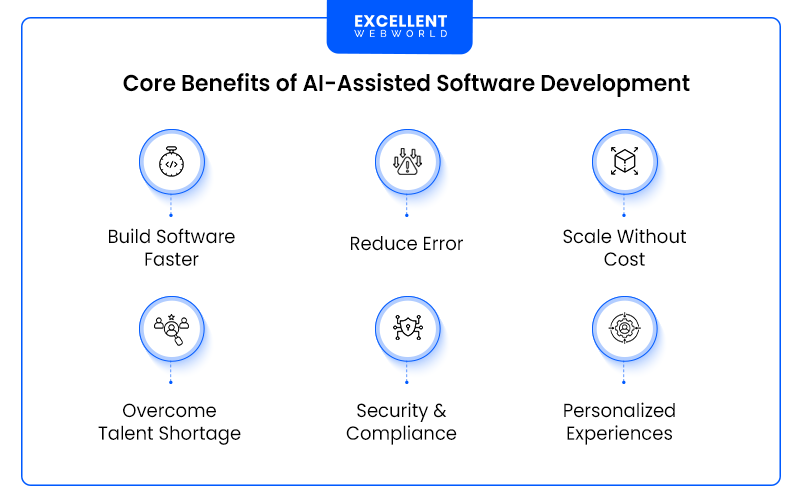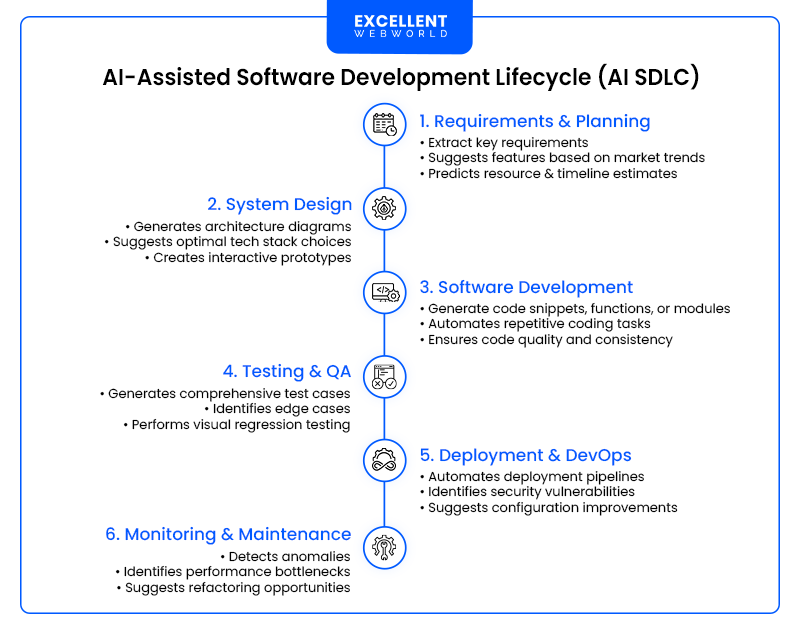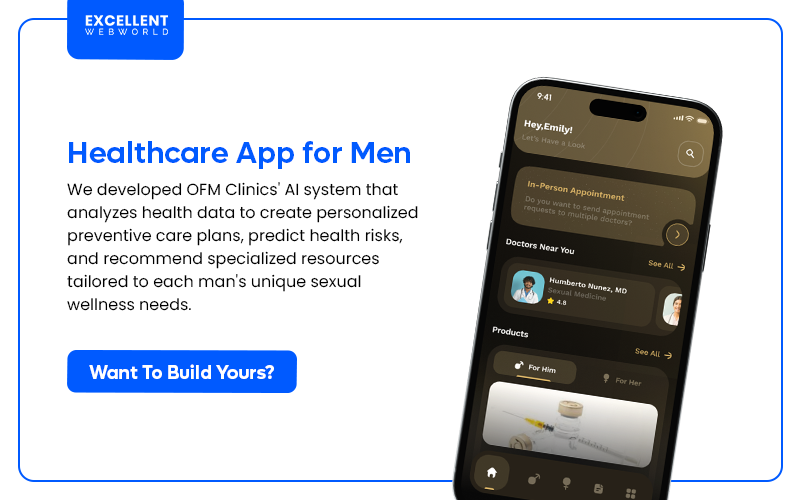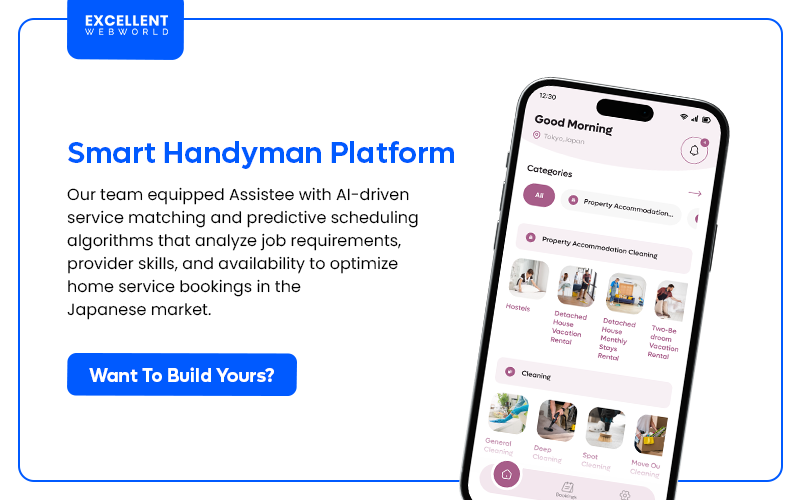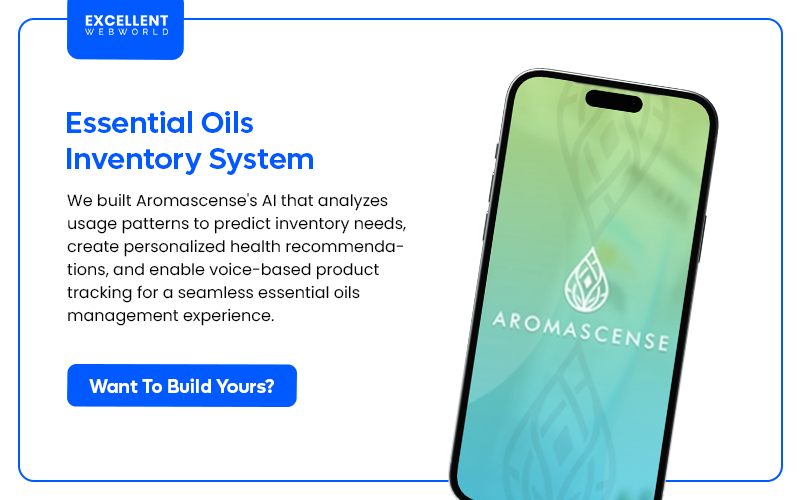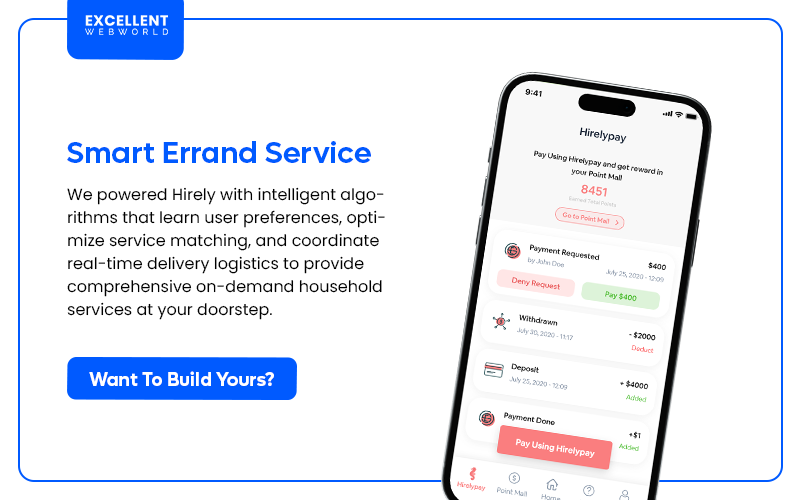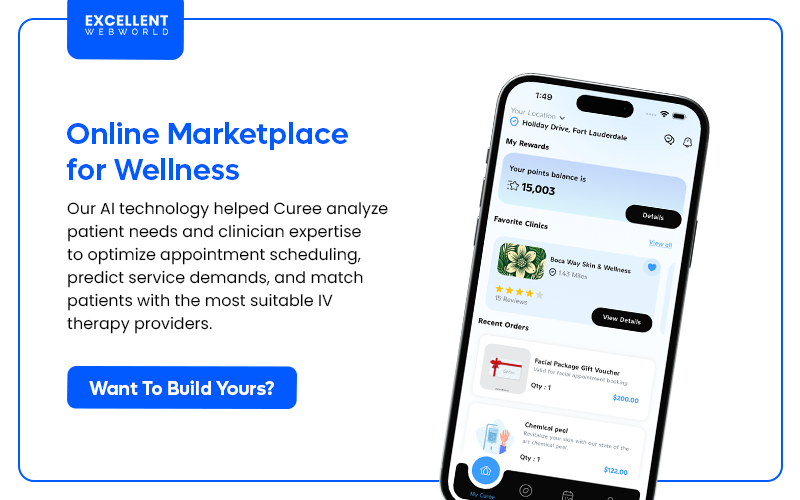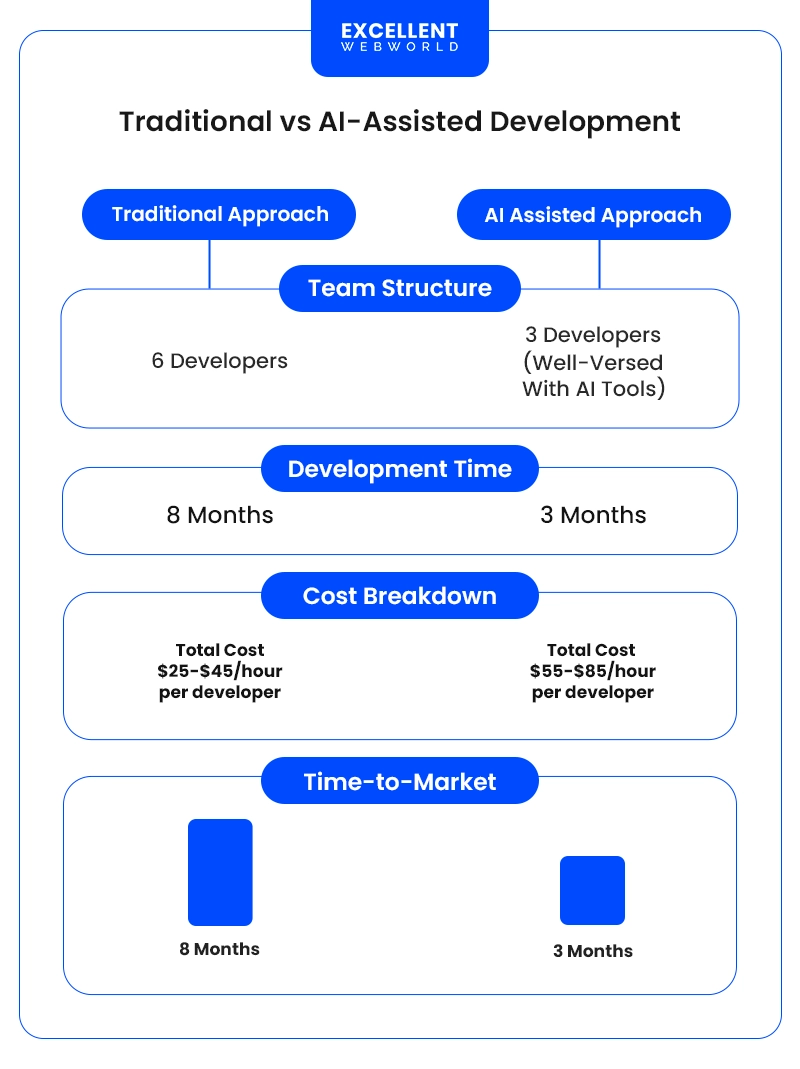Are you watching competitors launch faster while your team drowns in code? You’re not alone.
As a founder or tech leader, you know the struggle: tight deadlines, limited resources, and pressure from investors expecting quick results. Every day without progress costs you money and market share.
That’s where AI-assisted software development is changing the game for companies like yours:
In this guide, you’ll discover:
Your competitors are already exploring the use of AI in software development. Can you afford to be left behind? Keep reading to learn how AI is transforming the industry and if you prefer audio, check out our podcast.
AI-Assisted Development (AIAD) and AI-Assisted Software Development
AI-assisted development (AIAD) and, within that, AI-assisted software development have transformed how we build software and next-gen digital experiences in the last few years.
Let’s understand the fundamental difference between these two trending terminologies:
What is AI-Assisted Development (AIAD)?
AI-Assisted Development (AIAD) is when smart computer tools help knowledgeable, experienced, and skilled programmers write, test, and improve code. Unlike traditional development, where humans do everything manually, AI-assisted tools suggest solutions, find errors, and automate repetitive tasks.
Core Functions:
Technologies Used:
Application Areas:
What is AI-Assisted Software Development?
AI-assisted software development is the strategic use of artificial intelligence throughout the entire software development process to build better software faster. It goes beyond just writing code to enhance every phase of creating software.
AI-assisted developers are skilled professionals who know how to direct AI tools effectively. AI-assisted Development Services differ from vibe coding development services that rely on AI in app development without understanding the code it generates.
Core Functions:
Technologies Used:
Application Areas:
As AI transforms how software is built, the shift to AI-assisted development is no longer optional. Understanding this urgency is key. Let’s explore why now is the critical moment to adopt.
The Urgency of Adopting AI-Assisted Software Development
Embracing AI-assisted programming is becoming essential for competitive survival and efficient software delivery, highlighting the growing relevance of generative AI use cases in software development.
The numbers tell a compelling story:
While your competitors streamline operations with the help of generative AI development companies and implement a modern AI development process, your team might be stuck in traditional, time-consuming development cycles. The gap is widening quickly.
When deadlines loom and investors expect results, AI powered software development can transform how quickly you reach milestones. It is particularly valuable when working with outsourced teams:
Here are some of the urgency drivers that are forcing enterprises to shift towards AI-assisted software development:
| Urgency Drivers | Impact of Delayed Action |
|---|---|
| Competitive Advantage | Competitors will reach the market faster with more features |
| Productivity & Speed | Your development cycles remain 2-3x longer than AI-enhanced teams |
| Quality & Reliability | Higher bug rates without AI-powered testing and validation |
| Talent & Accessibility | Difficulty attracting developers who expect modern tools |
| Cost Efficiency & Scalability | 30-40% higher development costs without AI efficiencies |
| Security and Compliance | Missing AI-powered threat detection and compliance checking |
| User Expectations | Products that lack the personalization enabled by advanced technology |
| Technical Debt | Accumulating legacy code that is increasingly expensive to maintain |
| Innovation Capacity | Team bandwidth is consumed by routine coding instead of problem-solving |
| Investor Confidence | Growing skepticism about your technological competitiveness |
| Market Timing | Missing critical market windows while competitors move quickly |
| Knowledge Transfer | Slower onboarding and knowledge gaps in development teams |
Given the growing urgency to evolve how software is built, it’s essential to understand the specific ways AI can help. Let’s look at the core benefits driving this change.
Core Benefits of AI-Assisted Software Development
AI tools transform how companies build software, helping teams deliver better products faster. Here are the key advantages of AI-assisted software development:
1. Building Better Software, Faster
One of the biggest pros of AI-assisted software development is that it can increase developer productivity by automating repetitive coding tasks and generating initial code frameworks your team can refine and expand upon.
2. Reducing Errors and Improving Quality
AI coding assistants help increase software quality by catching bugs early, suggesting optimizations, and maintaining consistent coding standards across your entire codebase.
This is particularly valuable for enterprise mobile applications as they’re primarily designed for specific business operations.
Read our guide hand-crafted by our in-house experts if you want to understand more about enterprise mobile application development.
3. Scaling Without Proportional Costs
Your team can speed up prototyping, testing more ideas, and validating concepts before committing significant resources to complete development.
4. Overcoming Talent Shortages
AI tools help with IT planning and resource allocation by identifying where your team needs support and augmenting their capabilities without requiring immediately hiring development team for your startups, SME, or enterprise.
5. Meeting Rising Security and Compliance Demands
Advanced AI systems improve testing and debugging by automatically scanning for vulnerabilities and compliance issues that might otherwise slip through manual reviews.
6. Delivering Personalized, Innovative Experiences
AI can accelerate design specifications from concept to implementation and document decisions throughout the process, making knowledge transfer easier for your growing team.
For example, you can build an AI agent that automates specific business processes within your application for enhanced user experiences, just like the use cases seen in various AI agent examples.
To build scalable and intelligent solutions like these, partnering with an experienced AI agent development company helps you design, train, and deploy agents tailored to your business workflows. Such collaboration ensures that your AI systems not only perform efficiently but also align with your product vision.
AI-assisted development enables the renaissance of personal software development. It creates more accessible, efficient, and impactful software development that helps you deliver exceptional products while managing technical debt and budget constraints.
While the benefits of AI-assisted software development are significant, it is equally important to consider the potential risks and trade-offs that come with it as we balance innovation with responsibility.
Risks and Trade-Offs of AI-Assisted Software Development
Here are the significant challenges that you may encounter while incorporating AI-assisted software development in your enterprise:
| Risk/Trade-off | Impact On Business |
|---|---|
| Over-reliance issues | Teams can reduce productivity if used inappropriately, turning beneficial tools into workflow bottlenecks. |
| Quality inconsistencies | Even advanced systems may introduce errors and bugs that require additional human verification cycles. |
| Team morale concerns | Poor implementation can disengage software developers who feel their expertise is being undervalued. |
| Professional development gaps | Automating foundational tasks can remove learning opportunities essential for junior team members’ growth. |
| Security vulnerabilities | AI-driven development may increase cybersecurity risks through insufficient security pattern recognition, so it’s good to get help from a cybersecurity services provider to mitigate risks. |
| Model integrity | The models vulnerable to attack and manipulation create new security concerns for your product pipeline. |
| Cascading problems | Initial flaws in the generated code can create downstream cybersecurity impacts affecting your entire application. |
| Accumulation of debt | Uncritically accepted AI solutions can build technical debt, requiring costly future refactoring. |
| Strategic selection complexity | Choosing appropriate AI in development requires thoughtful investment rather than following trends. |
| Implementation barriers | The challenge of integrating these tools requires upfront investment before realizing efficiency benefits. |
| Documentation burdens | Developing AI software systems can generate excess documentation that increases long-term maintenance costs. |
| Risk management needs | Each AI-driven software development initiative requires new monitoring protocols to catch subtle issues. |
Understanding the risks is essential, but managing them means looking at every development step. Now, let’s explore how AI supports each stage of the software development lifecycle (SDLC).
End-to-End AI-Assisted Software Development Lifecycle (AI SDLC)
The AI-Assisted Software Development Lifecycle (AI SDLC) transforms how modern enterprises build digital products.
By integrating AI at each phase, your team can accelerate delivery, reduce the cost to hire an app developer, and create higher-quality solutions with fewer resources.
Phase 1: Requirements & Planning
In this initial phase, AI helps you gather, analyze, and prioritize requirements more effectively:
Your team gets more precise requirements in half the time, letting you move to design faster while avoiding costly misunderstandings.
Phase 2: System Design
During design, AI becomes your strategic partner:
AI-powered digital product design to development bridges the gap between concept and implementation, making your designs more technically feasible from the start.
Phase 3: Software Development
This is where software engineering teams see dramatic productivity gains:
With AI coding tools, skilled developers focus on creative problem-solving rather than routine task implementation.
Phase 4: Testing & QA
AI transforms quality assurance from reactive to proactive:
Your QA process becomes more thorough while requiring less manual effort.
Phase 5: Deployment & DevOps
Streamlining operations becomes easier with AI assistance:
Release cycles become faster and more reliable, even without dedicated DevOps specialists.
Phase 6: Monitoring & Maintenance
After launch, AI continues adding value:
Development teams can be more proactive about maintenance with AI.
Here is a summary of various SDLC phases, where AI can help, and which are the prominent tools and platforms you can use:
| SDLC Phase | AI-Assisted Capabilities | AI Tools & Platforms |
|---|---|---|
| Requirements & Planning | Automated requirement extraction, Timeline prediction | Assembly AI, Lovable, Glean AI, Causal, Viable |
| System Design | Architecture generation, Tech stack recommendation | Figma AI, Windsurf, TerraformGPT, Sketch2Code, Galileo AI |
| Software Development | Code generation, Optimization suggestions | GitHub Copilot, Cursor, Firebase AI, Tabnine, Codeium |
| Testing & QA | Automated test creation, Bug prediction | Autify, DeepChecks, Meticulous AI, Katalon TestGPT, Keploy |
| Deployment & DevOps | Pipeline automation, Security scanning | ArgoCD, Cortex, Wiz, OpsMx, Hydroplane |
| Monitoring & Maintenance | Anomaly detection, Performance optimization | Coralogix, Growthbook, Groundlight, OpsGPT, Monada |
You don’t need to be an AI expert to bring AI-assisted development into your organization. The right partner can help implement these tools that transform your development process, giving you the competitive edge needed in today’s fast-moving market.
AI-assisted Development Examples and Case Studies
Here’s how we have helped various organizations speed up their time-to-market and build robust software solutions faster with our end-to-end AI consulting services.
Having explored how AI enhances each phase of the software development lifecycle, the next step is understanding the associated costs and potential returns that make this transformation worthwhile.
Understanding Costs and Returns of AI-Assisted Development in Software
AI-assisted development can help your software projects, but it means more than adding new tools. You’ll need to change how your team works, teach them new skills, and update your systems. These changes affect both what you spend and what you gain..
Understanding this software development cost helps you make smarter investments and achieve better returns on your AI development strategy.
1. Upfront Costs
2. Ongoing Costs
3. Hidden Costs
Here is a summary of various cost and their ROI implications:
| Cost Type | Description | ROI Impact |
|---|---|---|
| Tool Licenses | Monthly fees for developer tools | 20-40% faster coding speed, typically pays for itself within 2-3 months |
| Training | Teaching teams to use AI effectively | 3-4x return as developers save 5-15 hours weekly once proficient |
| Quality Assurance | Human oversight of output | Prevents costly bugs that could cause $10K-$100K+ in emergency fixes |
| Infrastructure | Computing resources for operations | Minimal ROI directly, but enables the entire AI ecosystem |
| Integration | Time spent connecting with workflows | One-time cost that reduces friction, saving 1-2 hours per developer weekly |
When calculating the cost to hire AI-assisted developers, remember that your return comes from faster development cycles, reduced bugs, and the ability to build more ambitious products with your existing team size.
How to Calculate ROI for AI-Assisted Software Projects?
As a startup founder or CTO managing limited resources, you need concrete numbers to justify investing in AI-assisted development.
Here’s a comprehensive breakdown of how to calculate the real return on investment:
ROI = (Net Benefit / Total Cost) × 100%
Net Benefit = (Value Generated – Total Cost)
Value Generated = (Time Savings + Quality Improvements + Revenue Gains)
Now, let’s understand this cost calculation with a hypothetical example:
Imagine you’re developing a fintech app for expense tracking with these requirements:
You need to decide between traditional development and investing in AI-assisted software development.
Let’s break down the detailed costs for both traditional and AI-assisted development approaches:
Key Takeaways:
What to Look for When Hiring an AI-Assisted Software Development Partner?
Whether you choose to hire individual AI-assisted software developers or partner with an AI development company, here are the key things you should look for to ensure the team aligns with your technical and business goals:
Experience
Compliance
Transparency
Bias & Fairness
Data Privacy & Security
Human Oversight
Ethics
At Excellent Webworld, we’ve helped dozens of startups and growing companies cut development time while reducing costs through our software development consulting.
Our clients consistently launch faster, iterate more quickly, and build more robust products because we combine AI tools with seasoned human expertise.
Ready to accelerate your development? Contact us today to hire AI-assisted developers who deliver real results.

Article By
Paresh Sagar is the CEO of Excellent Webworld. He firmly believes in using technology to solve challenges. His dedication and attention to detail make him an expert in helping startups in different industries digitalize their businesses globally.

